The global demand for faster, safer, and longer-lasting batteries is accelerating — and lithium-ion technology is hitting its limits. From electric vehicles to grid-scale storage, industries are betting big on a powerful alternative: solid-state batteries.
This next-generation battery technology is one of the most searched topics in the energy sector, with growing interest from automakers, manufacturers, and investors. Solid-state batteries promise to overcome the safety, energy density, and performance barriers of conventional lithium-ion batteries. The race to commercialize them is already underway.
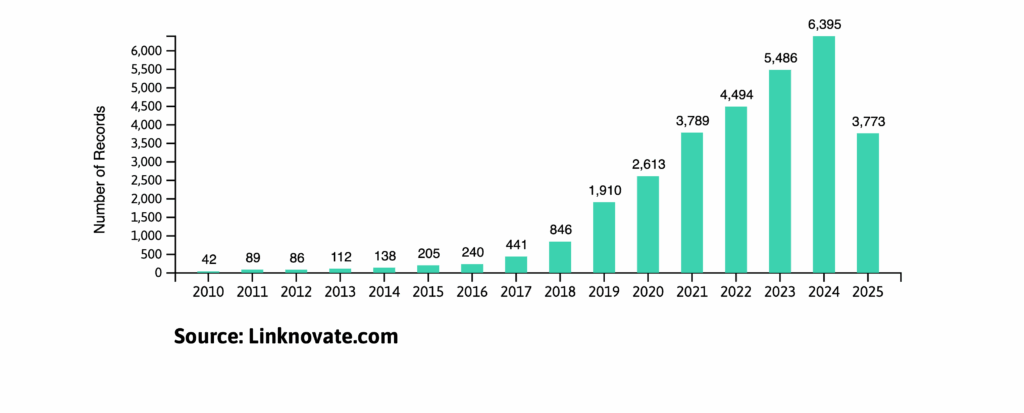
In this post, we break down the fundamentals of solid-state battery technology. We’ll highlight the key players driving innovation and analyze trends in funding, patents, and research using data from Linknovate — the innovation intelligence platform.
What Is a Solid-State Battery?
A solid-state battery (SSB) replaces the liquid electrolyte found in traditional lithium-ion batteries with a solid electrolyte. This shift enables several critical improvements:
- Higher energy density
- Faster charging times
- Lower risk of fire or leakage
- Increased lifecycle and durability
Because of these advantages, solid-state batteries are seen as a breakthrough for electric vehicles (EVs), consumer electronics, and renewable energy storage.
Key Players in Solid-State Battery Development
As the race to commercialize solid-state batteries intensifies, a select group of global corporations are leading the charge through partnerships, technological breakthroughs, and aggressive investment in R&D and manufacturing.
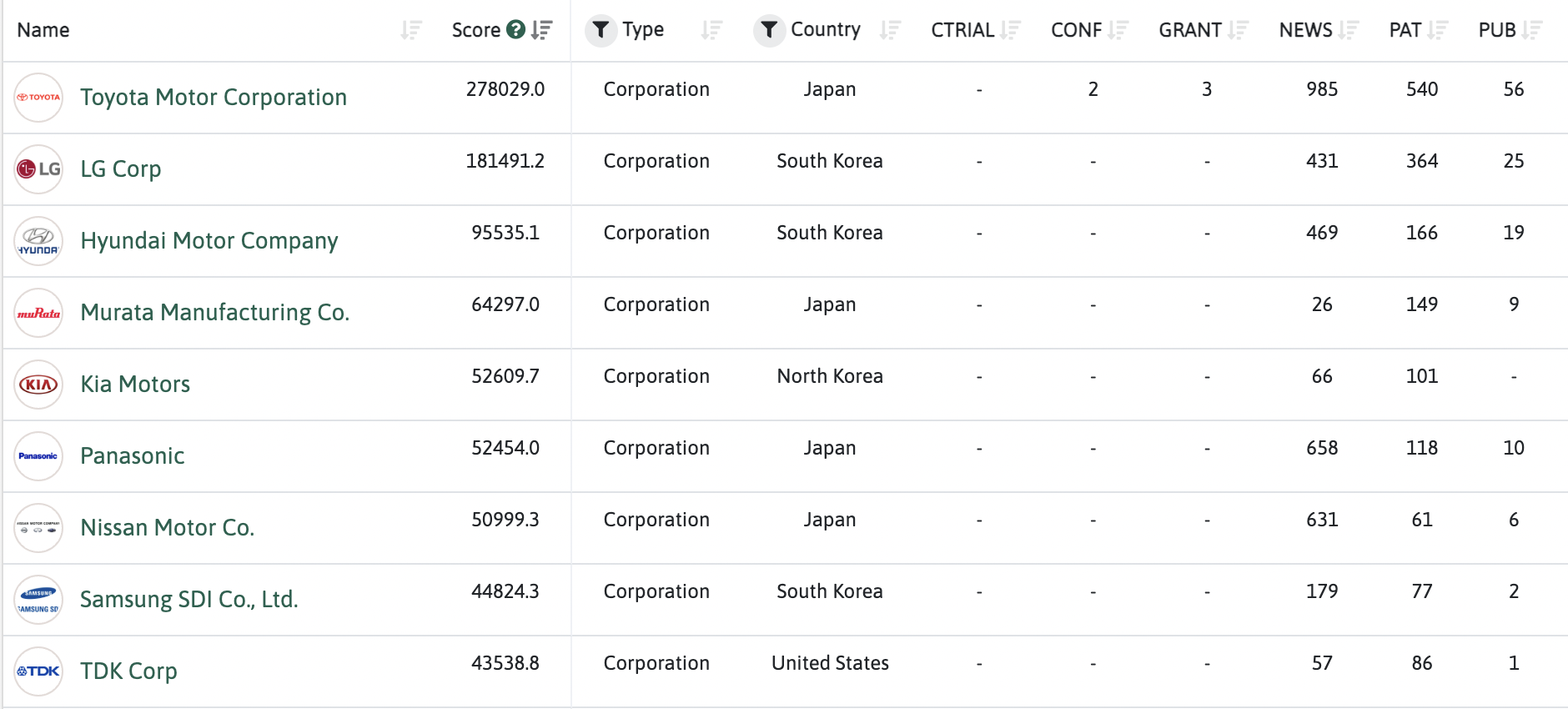
1. Toyota
In June 2025, Toyota received a major boost in its solid-state battery plans through a new collaboration with Japan’s oil giant Idemitsu Kosan. Idemitsu announced a ¥21.3 billion ($142M) investment to build a lithium sulfide plant, a key raw material for all-solid-state EV batteries.
Slated for mass production in 2027–2028, the facility will supply Toyota as its first customer, reinforcing Toyota’s commitment to leading the solid-state EV battery market. The partnership — backed by Japan’s Ministry of Economy, Trade, and Industry (METI) — positions Toyota at the forefront of this technological revolution.
2. QuantumScape
QuantumScape is a leader in solid-state lithium-metal battery technology. In April 2025, they entered a strategic collaboration with Murata Manufacturing, a global ceramics expert.

This partnership focuses on mass-producing QuantumScape’s proprietary ceramic separator, a critical component in their battery design. By combining QuantumScape’s “Cobra” separator process with Murata’s precision manufacturing, this alliance could significantly accelerate solid-state battery commercialization.
3. CATL
China’s CATL, one of the world’s largest battery manufacturers, revealed a major advancement in lithium metal battery (LMB) endurance. By using a new lithium salt electrolyte, CATL doubled the battery’s cycle life while maintaining high energy density.
This breakthrough highlights how electrolyte innovation can unlock new performance levels of both LMB and solid-state battery potential.
4. Samsung SDI
At InterBattery 2024, Samsung SDI announced plans to begin mass production of solid-state batteries in 2027. Their goal? Achieve 900 Wh/L in volumetric energy density using proprietary solid electrolyte and anode-less battery technology.
Samsung SDI’s pilot line is already delivering prototypes, and its roadmap includes ultra-fast charging and 20-year battery lifespans by 2029. This marks a bold move in the global solid-state race.
5. Kia
Kia (now a Hyundai’s company) sets a more conservative timeline, stating that solid-state battery commercialization likely won’t happen before 2030. According to Spencer Cho, Hyundai Motor Group’s Global Product Planning Chief, the industry is underestimating the complexity of scaling SSBs.
The company is currently focused on R&D and long-term strategy, signaling that they’re not rushing unproven tech to market.
6. Huawei
In a surprising move, Huawei has filed a patent for a nitrogen-doped sulfide solid-state battery that claims a 3,000 km range and 5-minute full recharge time. With energy densities reaching 400–500 Wh/kg, this innovation could redefine EV performance.
While still in early stages, Huawei’s entry into the battery space signals growing cross-industry interest in the solid-state battery market.
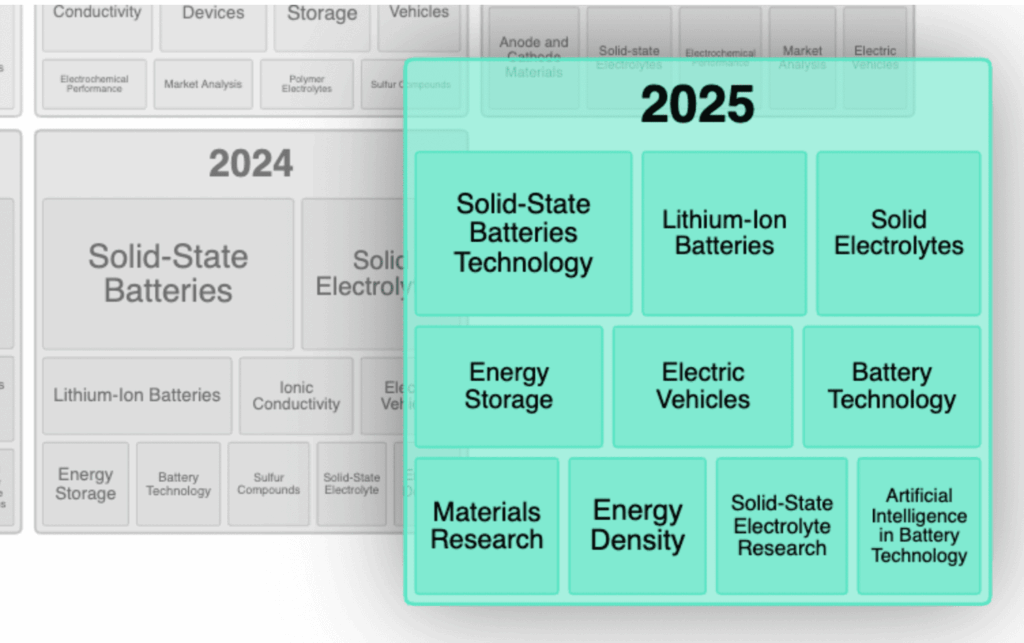
5 Emerging Startups in Solid-State Batteries
While legacy players continue to scale solid-state battery (SSB) research, a new wave of emerging startups is rapidly advancing commercialization. These agile companies are tackling key technical barriers like solid electrolytes, lithium-metal anodes, and manufacturability — and are attracting significant funding and OEM partnerships.
Here are five startups leading the charge in solid-state battery innovation in 2025:
1. Basquevolt (Basque country, Spain)
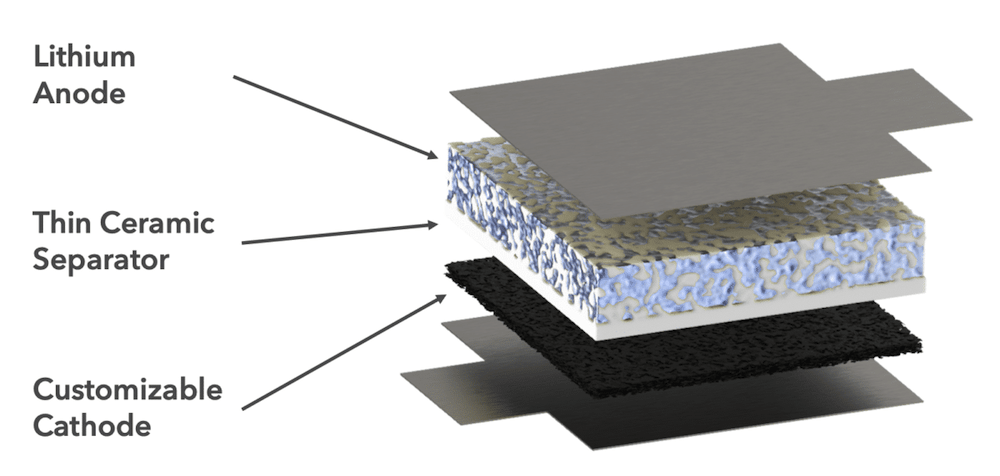
Selected for the European Commission’s EIC Accelerator with a perfect 9/9 score, Basquevolt is leading electrolyte development for European solid-state batteries. In 2025, the company received €2.5M in grant funding with access to an additional €10M in investment. Its electrolyte technology enables >50% more range and integrates easily into existing battery factories, supporting Europe’s push for battery sovereignty.
2. ION Storage Systems (USA)
ION Storage Systems is a U.S. startup developing next-gen solid-state batteries that operate without compression, making them safer and easier to scale. In 2025, it achieved a 25x capacity boost and over 1,000 cycles in large-format cells, retaining over 80% capacity. Backed by $20M from ARPA-E and a new 30,000 sq. ft. facility, ION targets EVs, defense, electronics, and grid storage.
3. Factorial Energy (USA)
With support from Stellantis, Factorial Energy is advancing solid-state lithium-metal batteries for EVs. In 2025, it validated its FEST platform, enabling 15–90% fast charging in 18 minutes and delivering 375 Wh/kg energy density. Its 77Ah cells also perform well in extreme temperatures. A demo EV fleet is set to launch in 2026, moving the tech closer to market.
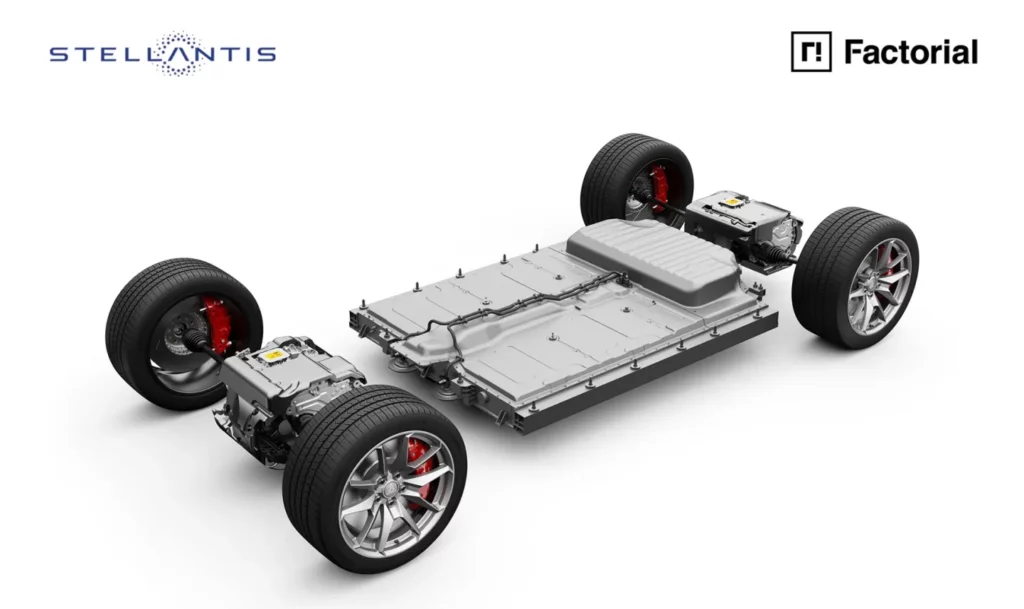
4. Solid Power (USA)
Solid Power advanced its all-solid-state battery (ASSB) roadmap by integrating its large-format cells into BMW‘s i7 test vehicles in 2025. The company also reported $6M in Q1 revenue and expanded its electrolyte sampling efforts via its dedicated innovation center. These efforts reinforce its role as a critical tech provider in next-gen EV development.
5. Theion (Germany)
In March 2025, Theion raised €15M to scale its crystalline sulfur battery technology, which promises 3x the energy density at 1/3 the cost and carbon footprint of lithium-ion. Targeting applications from EVs to flying taxis, Theion is preparing to transition from coin cells to large-format pouch cells.
When Will Solid-State Batteries Be Commercially Available?
Industry analysts project that solid-state batteries will start appearing in premium electric vehicles between 2027 and 2030, with early adoption possible in smartphones and wearables before that.
However, mass-market deployment still faces major hurdles, from reducing costs and scaling up manufacturing, to securing raw material supply chains and solving technical barriers like electrolyte stability and dendrite suppression.
As shown by Linknovate data, while there’s a surge in media coverage and hype, the innovation landscape is still dominated by academic research. The majority of innovation records in the solid-state battery space are made up of scientific publications, not patents or commercial deployments, signaling that the technology remains in a research-intensive phase.
This heavy academic contribution — led by institutions such as MIT, Stanford University, and the University of Tokyo — highlights the early maturity level of the technology. It also underscores how fundamental breakthroughs in materials science and manufacturing are still being explored in the lab, rather than commercialized at scale.
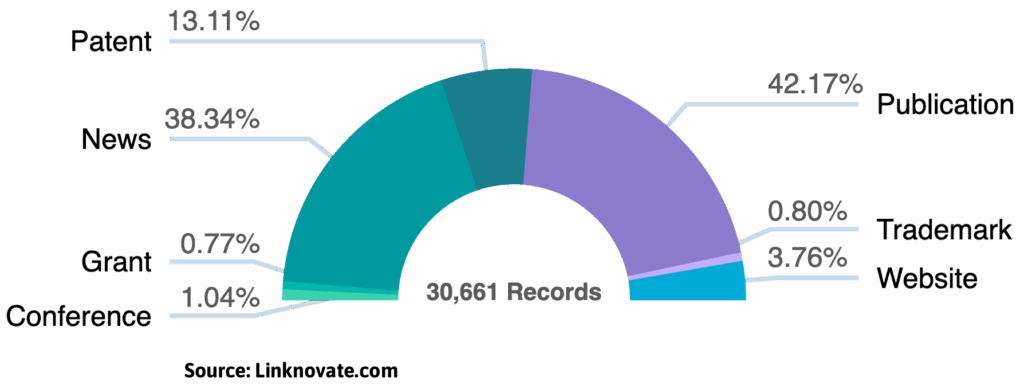
How to Stay Ahead: Track Innovation with Linknovate
The solid-state battery race is far from over — and staying ahead requires constant monitoring of breakthroughs, competitors, and funding movements.
With Linknovate, you can:
- Discover and analyze emerging startups in the solid-state battery space
- Monitor patent filings and R&D trends from leading institutions
- Track government funding and private investment
- Benchmark competitors and identify whitespace opportunities
Explore the full innovation landscape of solid-state batteries and unlock data-driven insights into the future of energy storage.







